The MINERVA-II1 rovers were deployed on September 21 to explore the surface of asteroid Ryugu. Here is the second report on their activities, following our preliminary article at the start of this week. We end this report with a video taken by one of the rovers that shows the Sun moving across the sky as seen from the surface of Ryugu. Please take a moment to enjoy “standing” on this new world.
1. Rover-1B hop
-
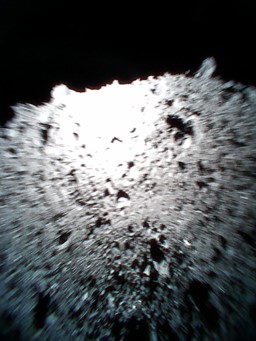
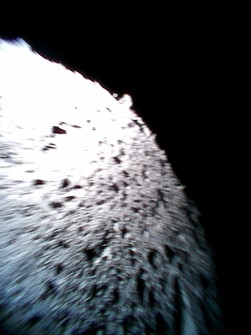
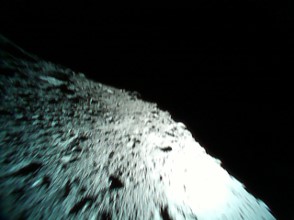
[Open in another window (Left)] [(Center)] [(Right)]Figure 1. Images taken by Rover-1B. September 23, 2018: confirmation of Rover-1B hop.
(Image credit: JAXA)
Observation time (JST): (Left) 2018-09-23 09:50, (Center) 2018-09-23 09:55, (Right) 2018-09-23 10:00
2. Image captured immediately before hop of Rover-1B
-
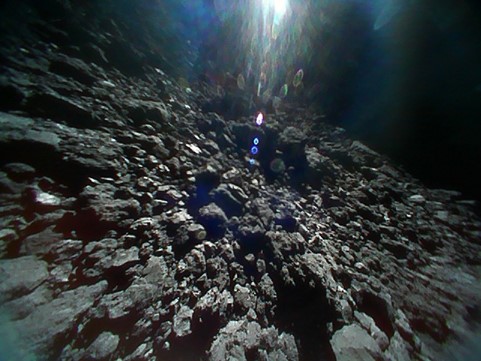
[Open in another window]
Figure 2. September 23, 2018: image captured immediately before hop of Rover-1B. 2018-9-23 09:46 (JST). (Image credit: JAXA)
3. Surface image from Rover-1B after landing
-
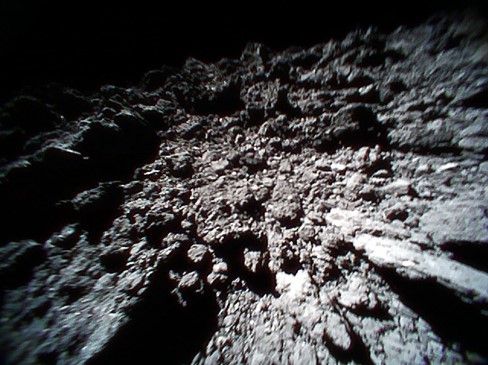
[Open in another window]
Figure 3. September 23, 2018 at 10:10 JST: surface image from Rover-1B after landing (Image credit: JAXA)
4. Surface image taken from Rover-1A
-
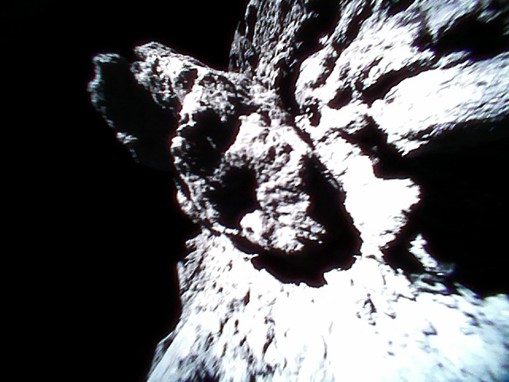
[Open in another window]
Figure 4. September 23, 2018 at 09:43 JST: surface image taken from Rover-1A (Image credit: JAXA)
5. Rover-1A captured the shadow of its own antenna and pin
-
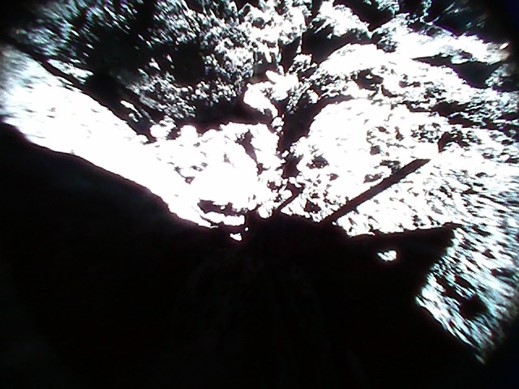
[Open left image in another window]
Figure 5. September 23, 2018 at 09:48 JST: surface image taken from Rover-1A. MINERVA-II1 successfully captured the shadow of its own antenna and pin. (Image credit: JAXA)
The pins on the MINERVA-II rovers have three roles:
1. To increase friction when hopping
2. Protect the solar cells during landing
3. A few of the pins also have a temperature sensor, so surface temperature can be measured directly.
6. Rover-1B successfully shot a movie
-
Figure 6. (movie) Rover-1B successfully shot a movie. 15 frames captured on September 23, 2018 from 10:34 – 11:48 JST. (Image credit: JAXA)
Hayabusa2 project
2018.09.27

